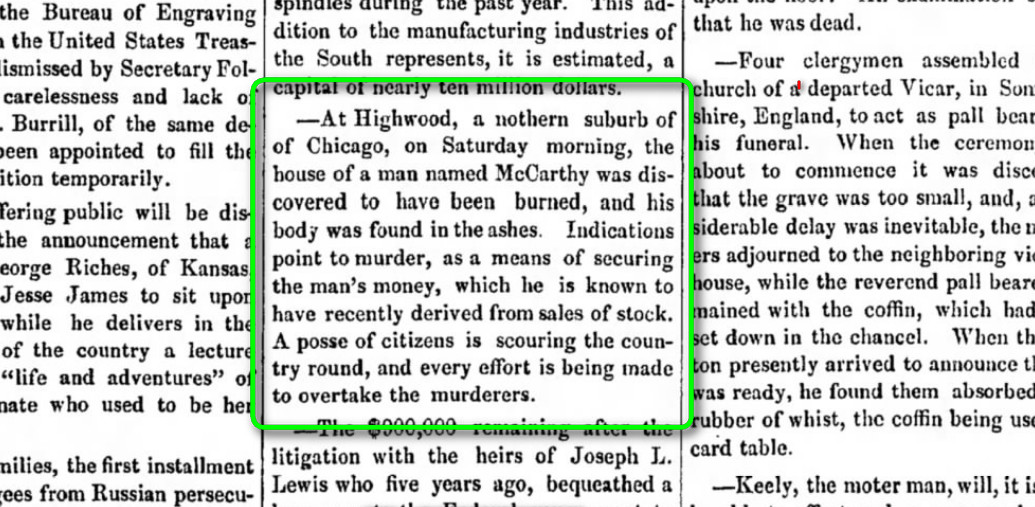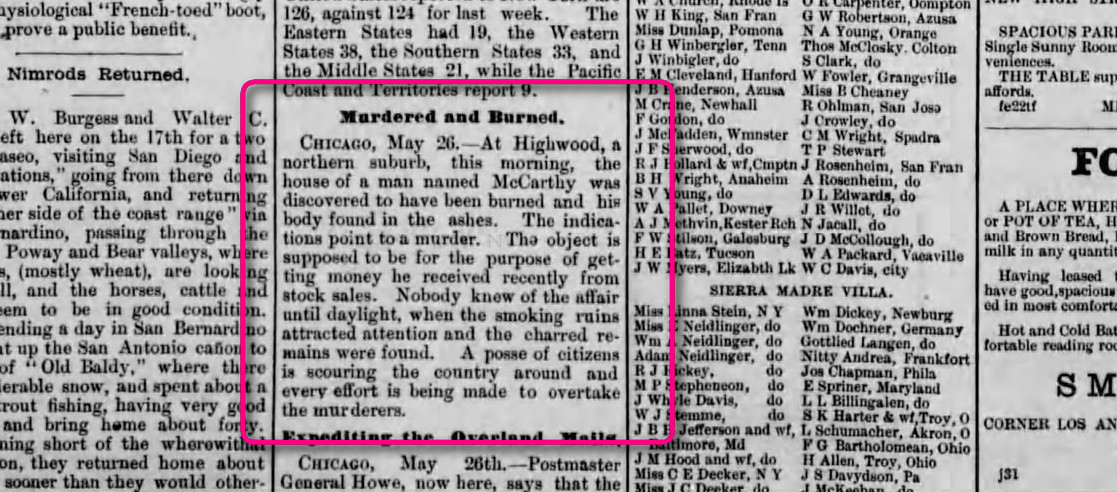
John McCarthy was about eighty years
old, living on his several acres of land about 3/4 mile North of the
City of Highwood, a bit East of Waukegan Road. He had been widowed about
a year earlier, and lived in his 3-room cottage with a few dogs and
cats, raising some cows and goats, and selling corn and other vegetables
in town from time to time.
Shortly after dawn on Friday morning, May 27, 1882, one of Mr.
McCarthy's neighbors noticed that the house had been burned to the
ground. While calling out for McCarthy in the ruins, a human torso was
discovered, believed to be all of the Earthly remains of Mr. McCarthy.
It was thought that McCarthy had, a few days earlier, sold some of his
livestock, for possibly up to $180 cash. The supposed proceeds from the
transaction were never found, and authorities believed that McCarthy was
killed while being robbed, and the house was burned down around him to
destroy evidence of the crime.
Rumor also had it that Mr. McCarthy was possibly hoarding a considerable
amount of gold and other valuables, although those who knew him never
saw any indication of it.
Murders so vile became infamous in a hurry, being just a mere seventeen
years after the ending of The Civil War, or The War Between The States,
or the Northern Invasion of The South, or whatever you choose to call
it.
The notoriety of the incident is evident by the wide and numerous
reports we have found of it in newspapers from coast to coast. For
instance, from these samples:
The Bucks County Gazette, Bristol,
Pennsylvania, Thursday June 1, 1882:

The Record Union, Sacramento,
California, Saturday May 27, 1882:

And
The Los Angeles Herald, Los
Angeles, California, Saturday May 27, 1882:

After a Coroner's Inquest was held in Waukegan, it was suggested that
the City Marshall should look into arresting those nasty Sweeneys, and
one of their friends, for this heinous act. We have not yet gotten to
the point of finding the court adjudication of this crime, but when we
come across it, we will be sure to let you know the outcome.
Probably the most complete description of the crime is the public record
of reportage by a member of The
Chicago Daily Tribune staff, who
submitted this, published on
Saturday, May 27, 1882. (This
amount of detail most likely rivals the official police and fire reports
of the time):
